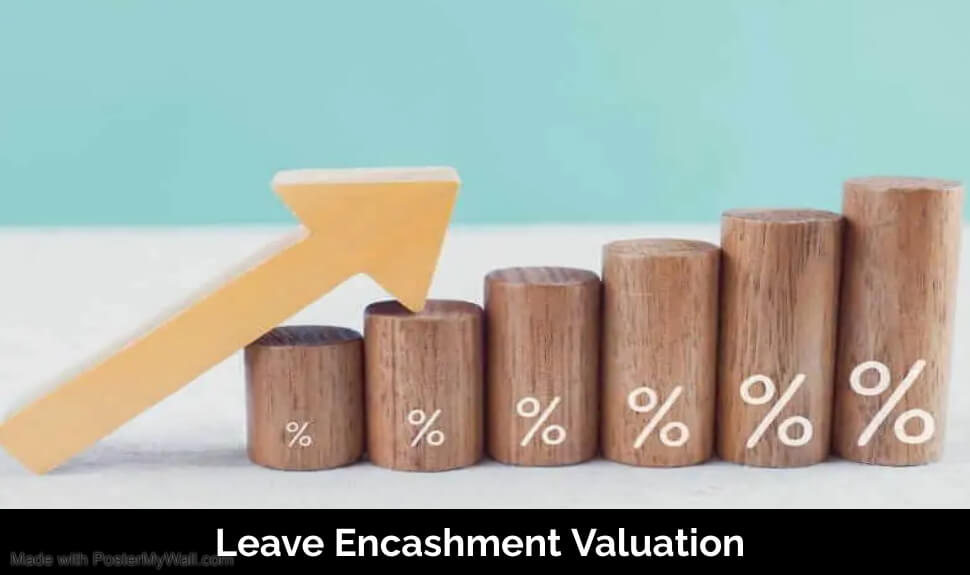Leave Encashment Valuation

Leave Encashment Valuation Every salaried person, as per labor law, is entitled to a minimum number of paid leave every year, however, it is not necessary that an individual employee utilize leave balance at the time of retirement or resignation from the company, as the case may be. This compels the employer to compensate the unutilized Paid leave of the employees. This concept is better known as leave encashment Valuation. If you want to know more about Leave Encashment Valuation like its types, formula, and more then read the whole blog.
Types of Leaves come under the Leave Encashment Valuation Policy
- Earned Leave (EL) – Earned Leave is so named because you ‘earn’ it by working on certain days. This sort of departure is likewise referred to as Vacation Leave (VL), Privilege Leave (PL), Flexi Holiday, or Annual Leave (AL). The EL leave type is often utilized for personal reasons such as vacation, observing festivals that are not declared holidays, and so on. Aside from EL, a few employers additionally provide a kind of go-away called Casual Leave. In contrast to EL, these leaves accommodate any unexpected/urgent personal needs. Is there an urgent family issue at home? Take a half or full day of CL to resolve the issue. Do you need to go to your child’s school for admissions work? CL saves the day.
- Leave of Absence (SL) – These, also known as Medical Leaves (ML), are granted in the event of illness or an accident. Another sort of leave that is required by law is sick leave. Employers frequently seek a medical certificate if the number of days of absence surpasses two or three days at a time because these leaves are prone to abuse.
- Maternity Leave (ML) – The Maternity Benefit Act of 1961 requires businesses to provide 26 weeks of paid leave to any woman who has worked for at least 80 days in the 12 months before the projected delivery date. While state laws oversee the preceding three types of leaves (AL/CL/SL), the Maternity Benefit Act is a federal law. For settlement of these leave issues leave encashment valuation policy is the best way to solve.
- Marriage Leave – Marriage Leave is a specific leave provided by some employers for employees who are getting married. While it is mandatory in a few countries such as Malta and Vietnam, marriage leave is not a legal entitlement in the majority of countries, including India. However, most employers provide three days of marital leave as a standard.
Leave Encashment Valuation Formula
Here’s an example to help you understand how the leave encashment is calculated:
Mrs. Das is leaving the company after 30 years of service. Her firm provided her with 25 days of paid leave per year, for a total of 500 days of leave during her entire tenure with the company.
Mrs. Das has already taken 150 days of paid vacation as a result of this. She now has 350 days of unused leave. At the time of retirement, she is receiving a base salary plus a dearness allowance (DA) of Rs 35,000 per month.

Now, leave encashment Valuation is computed by multiplying the number of unused leaves by the salary per day, which is calculated as:
Day wage = 35,000/30 = Rs. 1167 (approx)
Received leave encashment = 350*1167 = 4,08,450
As a result, Mrs. Das earned Rs 4,08,450 as leave encashment.
Why Leave Encashment Policy is Important for Businesses?
Many businesses’ leave policies consist of informing their employees about their paid vacation days and national holidays.
However, leave policies are far more significant than you would think. Most candidates who are being hired by a company will inquire about the company’s leave policy. Aside from the number of leaves, potential employees want to know what types of leaves the organization offers for different requirements and crises.
A Leave Encashment valuation policy assists you in defining the number of leaves available to your employees, the sorts of leaves available to them, and how to apply for leaves.
With a leave policy, you can reassure them that you will offer them the necessary time off to address any challenges they may be experiencing or to take time off to travel, recover from an illness, celebrate their festivals, cope with life events, or simply relax.
Employers must grasp the many rules governing paid Leave Encashment valuation policy in order to be in compliance with the law. Aside from that, many forward-thinking organizations now provide a variety of other leave options as supplementary bonuses to their employees.

National and state legislation governs the minimum amount of leave that businesses must provide. However, the specifics of leave policies vary greatly amongst employers.
Because different industries are subject to different labor rules, the nature of the business is an important consideration.
The Factories Act of 1948 applies to factories in India. Every state has enacted the Shops and Commercial Firms Act for establishments other than factories (such as IT/service companies, shops, and so on).
Suggested Reads: IND AS 19 Employee Benefits, Actuarial Valuation, Gratuity Valuation, GAAP (GENERALLY ACCEPTED ACCOUNTING PRINCIPLES), AS15 R (Accounting Standard 15 Revised).
Visit our website https://www.mithrasconsultants.com/

 Call Us
Call Us Whatsapp Us
Whatsapp Us